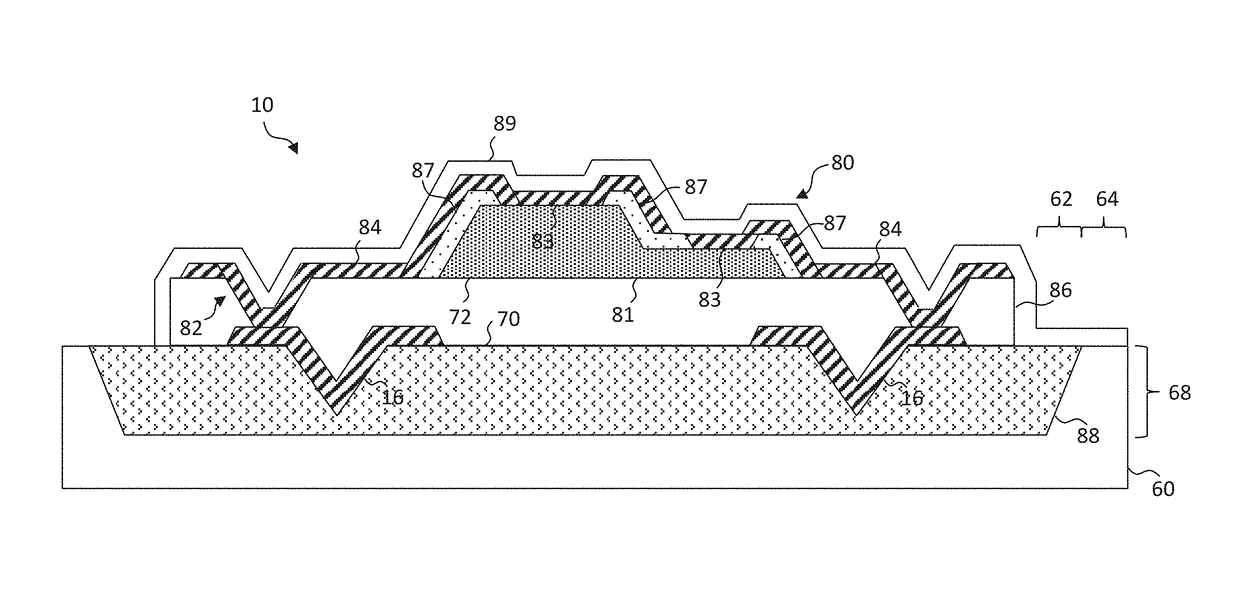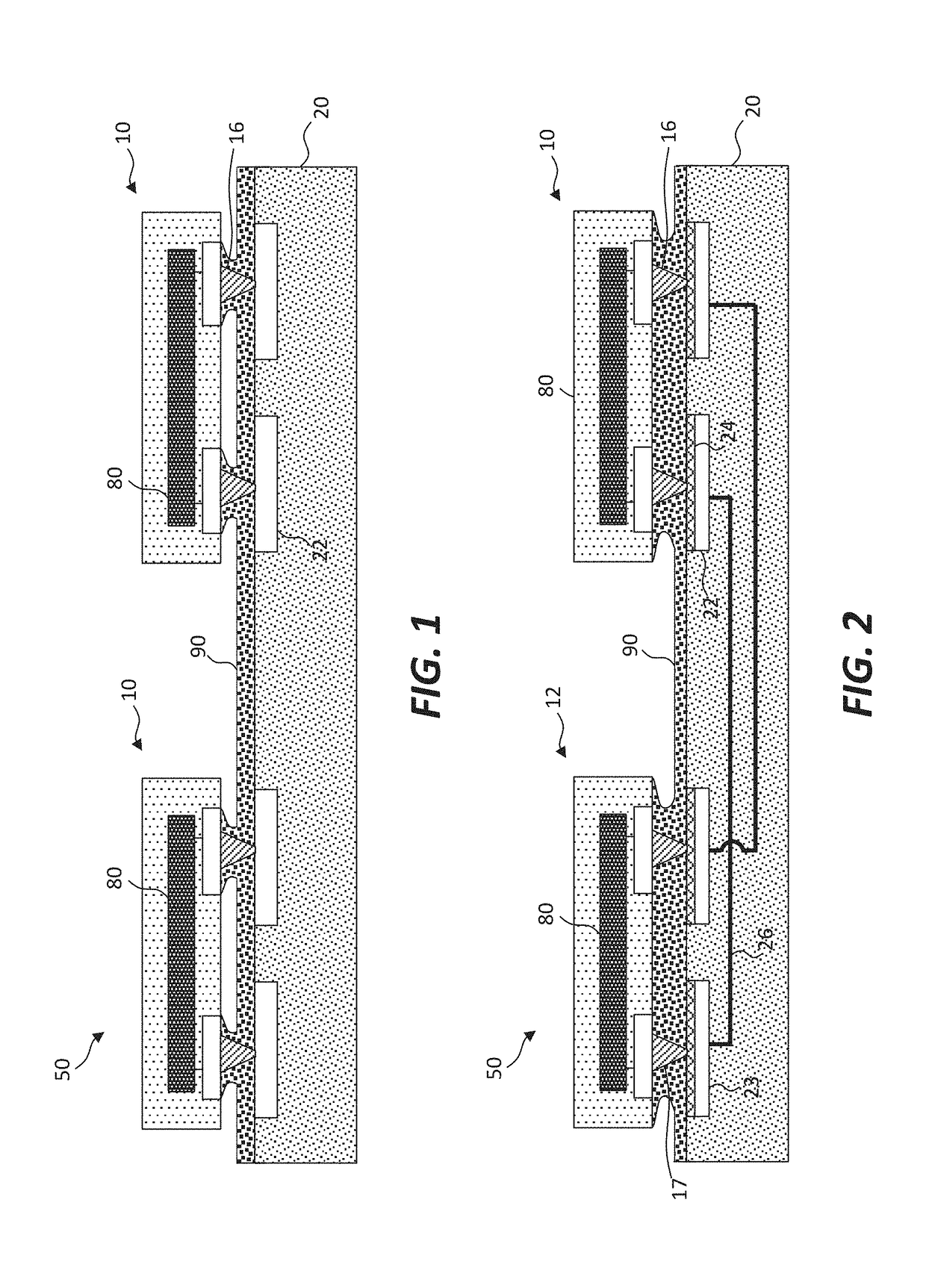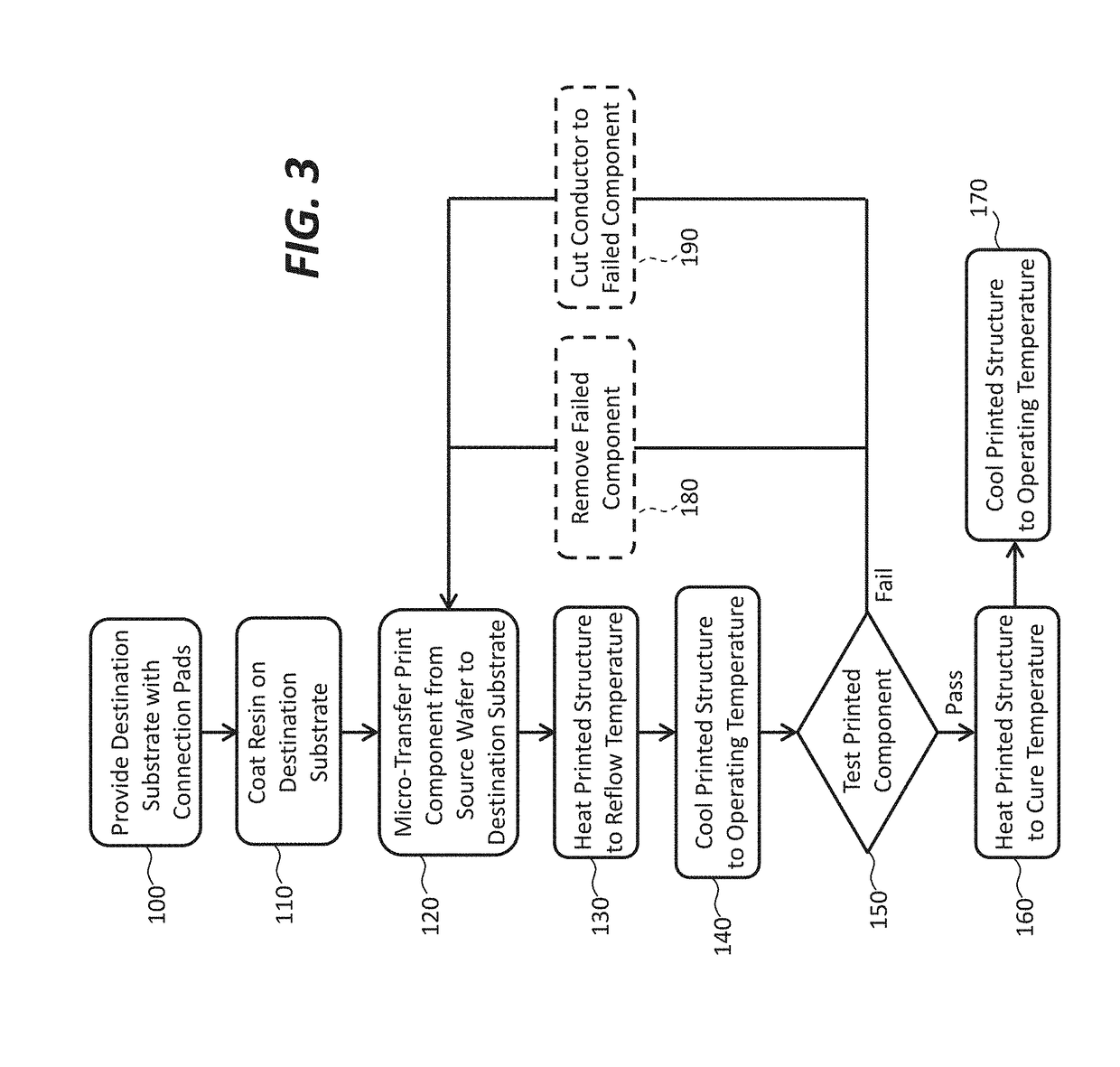Pressure-activated electrical interconnection by micro-transfer printing
- Summary
- Abstract
- Description
- Claims
- Application Information
AI Technical Summary
Benefits of technology
Problems solved by technology
Method used
Image
Examples
Embodiment Construction
[0113]The present invention provides a structure and method for electrically connecting relatively small electrical components such as integrated circuit chiplets, LEDS, or electrical jumpers to a relatively large destination substrate in an efficient and cost-effective way. Referring to FIGS. 1 and 2 in an embodiment of the present invention, a printed electrical connection structure 50 includes a substrate 20 having one or more electrical connection pads 22 formed on or in the substrate 20. The connection pads 22 can be, for example metal backplane contact pads made using photolithographic methods, tools, and materials. The substrate 20 can be, for example, a printed circuit board or display substrate and can include glass, polymer, plastic, resin, or fiber glass.
[0114]A printed component 10 has a circuit 80 and one or more connection posts 16. The circuit 80 can be any structure responsive to, controlling, or conducting electrical energy supplied through the connection posts 16, ...
PUM
 Login to View More
Login to View More Abstract
Description
Claims
Application Information
 Login to View More
Login to View More - R&D
- Intellectual Property
- Life Sciences
- Materials
- Tech Scout
- Unparalleled Data Quality
- Higher Quality Content
- 60% Fewer Hallucinations
Browse by: Latest US Patents, China's latest patents, Technical Efficacy Thesaurus, Application Domain, Technology Topic, Popular Technical Reports.
© 2025 PatSnap. All rights reserved.Legal|Privacy policy|Modern Slavery Act Transparency Statement|Sitemap|About US| Contact US: help@patsnap.com



